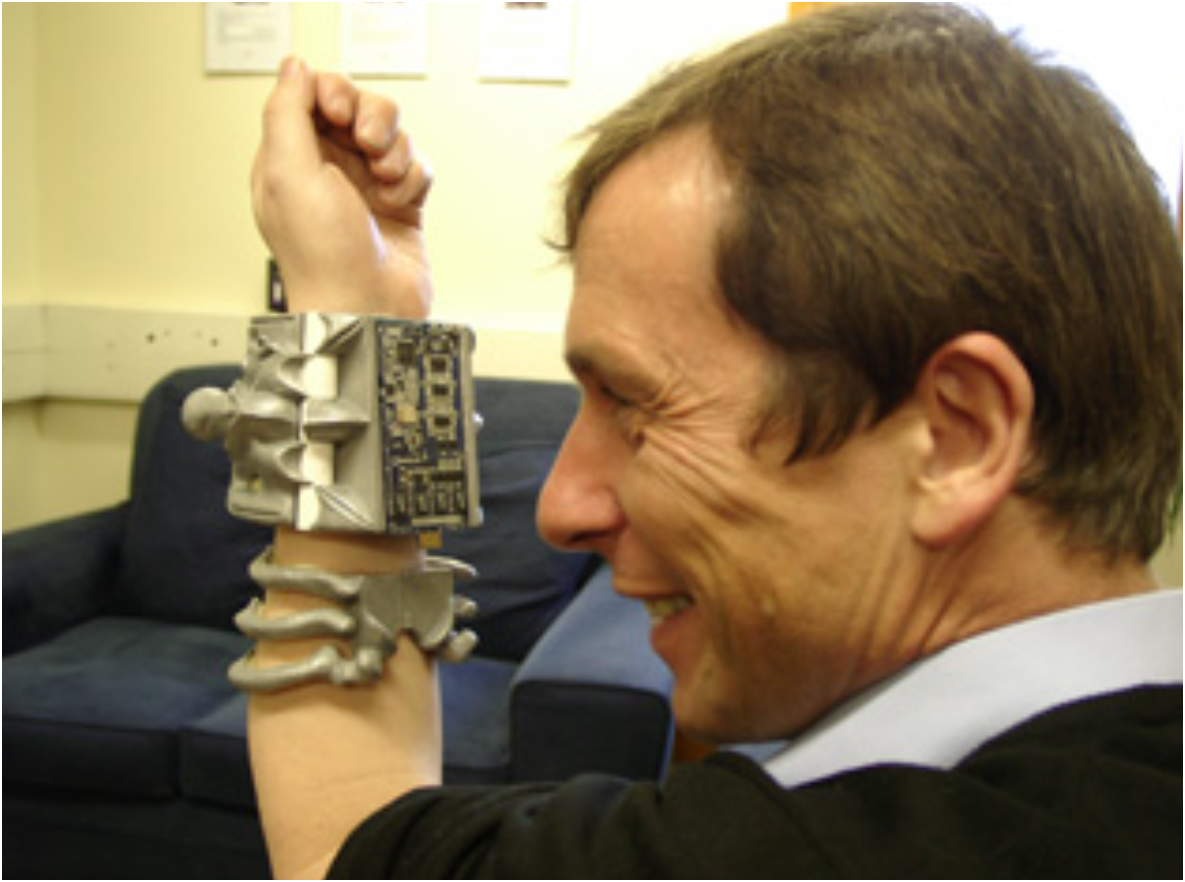Kevin Warwick, a pioneering figure in the fields of cybernetics and robotics, is often referred to as the world’s first cyborg. His groundbreaking experiments have pushed the boundaries of human-technology integration, earning him a unique place in scientific history and sparking discussions about the future of human augmentation.
Early Life and Career
Born in 1954 in Coventry, England, Kevin Warwick showed an early interest in science and technology. He pursued a degree in Electrical and Electronic Engineering from Aston University and later completed his Ph.D. at Imperial College London. Warwick's academic and professional journey led him to become a professor of cybernetics at the University of Reading, where he began his most notable work.
Becoming a Cyborg
In 1998, Kevin Warwick made headlines with his first major experiment, Project Cyborg 1.0. In this groundbreaking study, Warwick had a simple RFID (radio-frequency identification) chip implanted in his arm. This implant allowed him to control doors, lights, heaters, and other computer-controlled devices remotely. The experiment aimed to demonstrate the potential for integrating human physiology with digital technology.
In 2002, Warwick took a significant leap forward with Project Cyborg 2.0. He had a more complex device implanted in his nervous system, connecting it to the internet. This neural interface enabled direct communication between Warwick's nervous system and a computer, allowing him to control a robotic arm remotely and receive sensory feedback from it. This experiment marked a pivotal moment in the field of bioengineering, showcasing the possibilities of merging human nervous systems with computer networks.

Implications and Ethical Considerations
Kevin Warwick's experiments have profound implications for the future of medicine, robotics, and human enhancement. By demonstrating that technology can be integrated with the human body to restore or enhance function, Warwick's work has opened new avenues for treating neurological disorders, improving prosthetics, and exploring human-machine symbiosis.
However, his work also raises important ethical questions. Issues such as privacy, security, and the potential for human augmentation to create social disparities must be addressed as this technology continues to develop. Warwick himself has been an advocate for responsible innovation, emphasizing the need for ethical guidelines and public discourse on these topics.
Current Work and Legacy
Kevin Warwick continues to be a leading figure in cybernetics and artificial intelligence. His current research focuses on the development of intelligent systems and the future implications of human-technology integration. Warwick's contributions extend beyond his experiments; he has published numerous books and papers, educating both the scientific community and the public about the potential and challenges of cybernetic advancements.
Conclusion
Kevin Warwick's journey as the world's first cyborg has significantly impacted the fields of cybernetics, robotics, and bioengineering. His pioneering experiments have not only demonstrated the feasibility of human-technology integration but also sparked crucial discussions about the ethical and societal implications of such advancements. As we move towards a future where the lines between human and machine increasingly blur, Warwick's work remains a guiding beacon, highlighting both the incredible potential and the necessary caution that comes with technological progress.